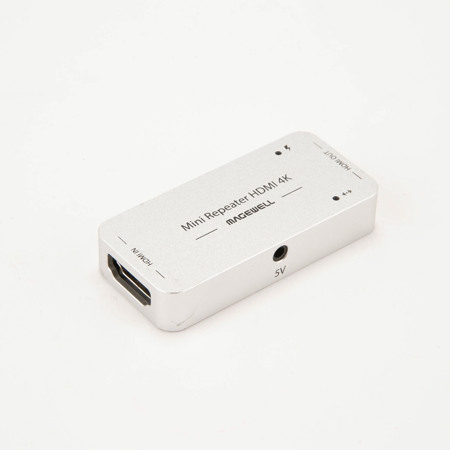
Picture does not represent the actual item
See what's in the box
Review Summary
2021-03-04T04:14:46
I have an Azulla 3 stick. The HDMI signal was very weak, no signal was detected, even when directly plugging directly into a projector. The repeater worked like a charm. Now I can see and hear all of my content.
KENNETH R.
Extend coverage on pre-owned products after the retailer warranty ends and protect photo & video gear from accidental damage with Adorama Protect.
If we can’t fix it, we’ll replace it at no additional cost.
Coverage for pre-owned gear begins after the retailer warranty ends, plus accidental damage protection for photo/video gear that starts on day one.
Enjoy your gear without fear. We have you covered!
When regular use of your product over time results in mechanical or electrical failure.
We will never charge you a deductible after the purchase of a plan.
Our claims process is simple & easy and our customer service team is happy to help.
Adorama Protect powered by Extend is available for purchase to customers in the United States. Not available for International and U.S. territories purchases. Plans on pre-owned items do not cover pre-existing damages.
Browse our FAQ
TMDS (HDMI/DVI-D)
HDMI Type A
+5V
TBD, 5V as the maximum current
0 to 50 deg. C (32 to 122 deg. F)
-20 to 80 deg. C (-4 to 176 deg. F)
5-90% (non-condensing)
58.22 x 27.26 x 10.80mm (2.29 x 1.07 x 0.43")
Works perfectly
By KENNETH R.
I have an Azulla 3 stick. The HDMI signal was very weak, no signal was detected, even when directly plugging directly into a projector. The repeater worked like a charm. Now I can see and hear all of my content.
The repeater receives and equalizes an HDMI signal and outputs it to another HDMI cable. It ensures clear delivery of 4K/2K/HD signal over a longer total length of cable. When a capture card directly captures the signal and it shows black-and-white dots (random digital noise or dropout) or the Properties panel reports "no signal" or "unsupported signal", you can try using the repeater. It can fix the corrupted signal at the receiving end or generate a better signal at the sending end, so that the user can capture the image correctly.
However, if the signal is seriously corrupted, the repeater might not solve the problem. The optimum place for the repeater is typically midway between the source and the capture device. If a long cable is not delivering a stable signal, try replacing the long cable with two shorter cables, with the repeater connected in-between them.